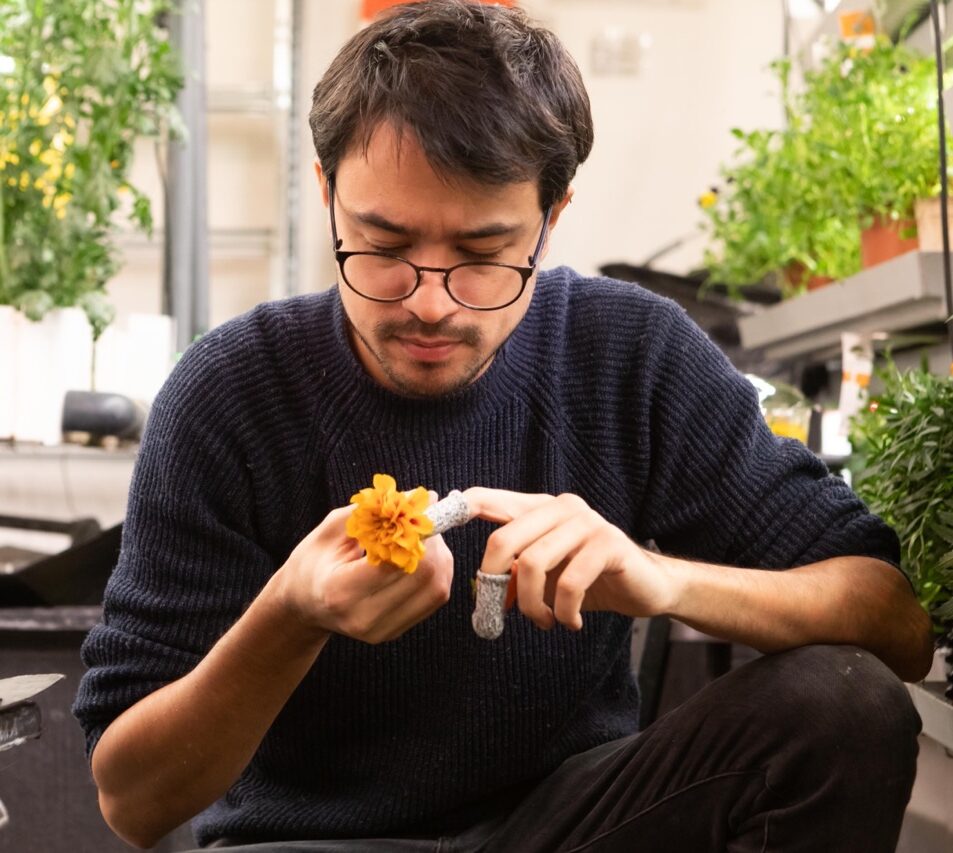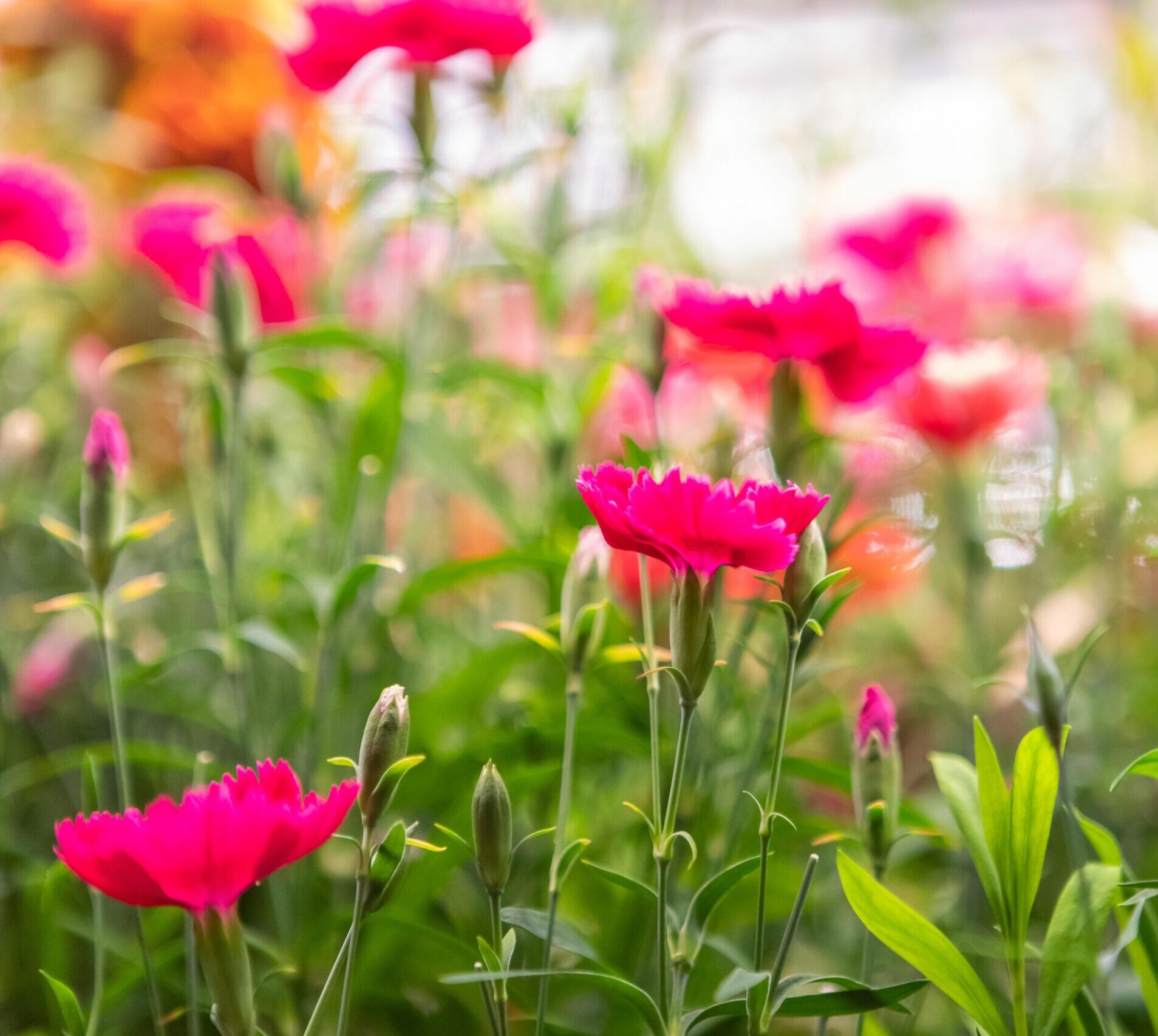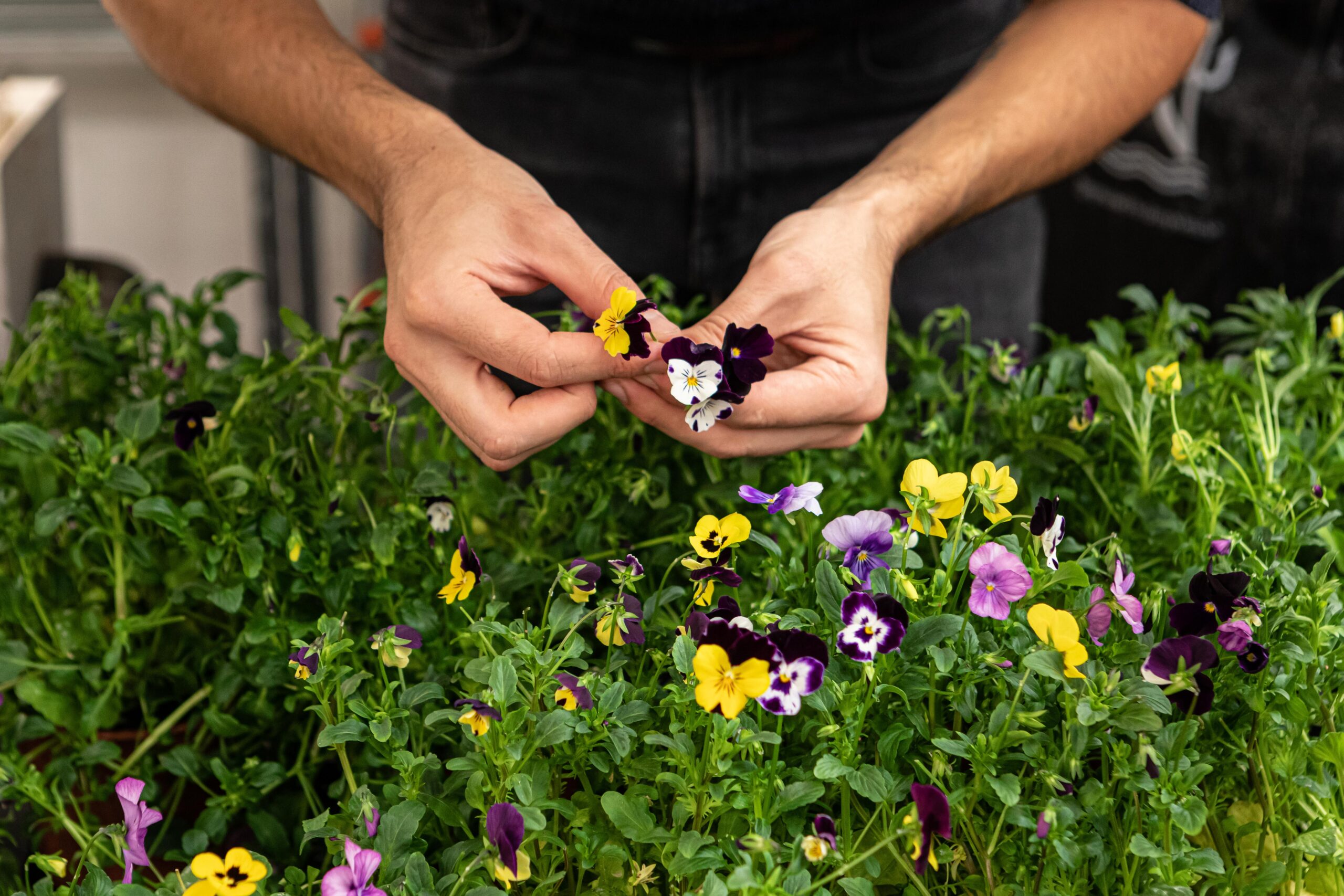 To explore the rise of edible flowers in modern cuisine, we speak with Glen Cheynier, the General Manager of Wesh Grow. Located in a repurposed underground parking space in Paris, this innovative urban farm is a proud member of the Kroptek Network. Glen shared insights into the growing prominence of edible flowers, not only as an aesthetic enhancement to dishes but as unique capsules of flavour.
To explore the rise of edible flowers in modern cuisine, we speak with Glen Cheynier, the General Manager of Wesh Grow. Located in a repurposed underground parking space in Paris, this innovative urban farm is a proud member of the Kroptek Network. Glen shared insights into the growing prominence of edible flowers, not only as an aesthetic enhancement to dishes but as unique capsules of flavour.
Edible flowers have been a popular dietary staple especially in countries like China where their use dates back to 3000 BCE. More recently, edible flowers have faded into the domain of exclusive top-tier chefs, however they are making a notable re-entrance into mainstream culinary scenes. With their delicate tastes and striking looks, edible flowers such as Dahlia, Cornflower and Hibiscus are gaining global appeal, and certain blooms, like chamomile also boast medicinal benefits. In the future we hope to see flowers harnessed to their fullest extents, with natural properties spanning from vibrant dyes to healing skincare treatments.
The Wesh Grow Approach
Wesh Grow have mastered eight varieties of edible flowers but are ambitiously perfecting another 10. Glen notes that selecting varieties requires a delicate balance between agronomical viability and a sound business model. Whilst there are hundreds of edible flower varieties he is focussed on cultivating varieties which produce lots of blooms. Some of the flowers they’ve cultivated with success include Viola, Marigolds, Dianthus, Snapshots, Horatio, Begonias, Oxalis, and Hyssop, among others.

Wesh Grow’s controlled environment, enriched with advanced LED lighting from Kroptek, provides the flowers with the precise care and conditions they need. “Things grow extremely well”, says Glen, but as a priority Wesh Grow select the most efficient flowers which promise abundant blooms to ensure the optimisation of energy usage. Glen’s insight speaks to an important approach for commercial indoor growing. Whilst CEA can facilitate all kinds of crops, energy hungry produce should not become an industry norm.
Introducing Kroptek’s Racking System at Wesh Grow
Always looking to elevate their operations, Wesh Grow is gearing up to integrate Kroptek’s Racking System into their flower farm. This deep-water culture (DWC) system, a deviation from their traditional ebb and flow method, is expected to optimise growth for their top-selling products. By doing so, Glen hopes to increase their product yields, extend their flowers’ health and life, and ultimately, drive profitability.
However, Glen is not stopping there. He also plans to utilise the new system to test grow varieties that have historically posed challenges, such as daisies and cornflowers. Growing edible flowers presents unique challenges when compared to herbs or leafy greens. Glen explains “flowers come with longer lifecycles. While microgreens can be grown and harvested very quickly, flowers take the same time to merely begin their blooming phase”. This prolonged growth cycle not only increases the risk of disease and pests but also means a higher economic impact if a batch fails, given the time investment. Still, Glen maintains that growing edible flowers indoors is easier than conventional outdoor agriculture.
Despite its challenges, Glen sees a rising demand for locally produced edible flowers. Typically, these flowers are imported from distant countries, making them either non-local or non-seasonal. Wesh Grow’s approach uniquely combines the benefits of both. By growing flowers indoors, they can offer fresh, local produce year-round, a significant advantage, especially in urban hubs like Paris. Glen concludes that there’s no denying its burgeoning potential, especially in the edible flower sector.
To find out more about Wesh Grow visit their website and to explore our new racking system get in touch via our website or email: info@kroptek.com
All Photo Credits to: Camille Coquet

